It’s a tired stereotype that drivers think of speed cameras as the enemy.
In June 2019, our Populus poll asked Members if it was acceptable to use speed cameras to identify vehicles involved in speeding offences. 8 out of 10 said yes.
But although the vast majority of people accept speed cameras, there are still questions over how they work. Read on to find the answers.
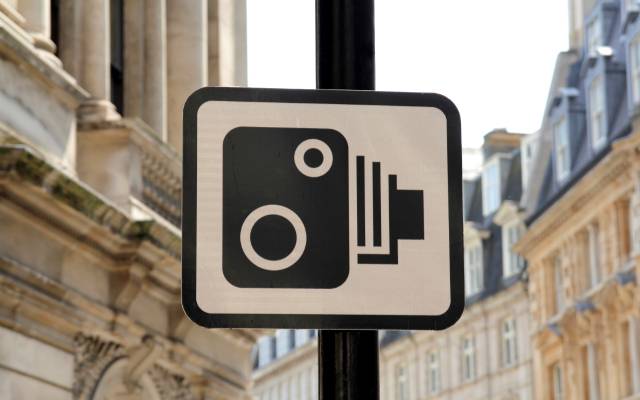
Why do we need speed cameras?
Speed cameras are an important tool in maintaining and improving road safety. They keep drivers on their best behaviour and make roads safer. That means they should only be a burden for bad drivers.
An LSE study showed that from 1992 to 2016, speed cameras reduced accidents by between 17% to 39%. They reduced fatalities by between 58% to 68%. And the effects were seen within 500 metres of the cameras.
How do speed cameras work?
Speed cameras record a vehicle’s speed by using detectors in the road or radar technology, depending on the type of camera.
Some speed cameras combine with traffic light cameras to monitor lights and junctions too. They can detect vehicles travelling over the stop line or entering the intersection after the lights have turned red. If the speed of the vehicle exceeds the legal limit, or a vehicle runs a red light, the camera is triggered.
If the camera detects speeding, it takes a digital image. The image will catch the vehicle’s colour, type, make and registration plate. It may also capture the face of the driver, depending on the type of camera and which way it's facing. Not all cameras will get a clear picture of the driver.
The camera will also record the:
- Time and date of the offence
- Speed you were travelling
- Speed limit on the road
What happens after you've been caught by a speed camera?
If you're caught breaking the speed limit, the image recorded by the camera will scan your car’s number plate to get the registered address from the DVLA.
Within 2 weeks of being caught, a Notice of Intended Prosecution (NIP) will be sent to the registered owner of the vehicle. It'll also include a request to provide driver details in case someone else was driving at the time.
If the car's owner wasn't driving then they must let the police know the name and address of the person who was.
What is the penalty for speeding?
The minimum penalty for speeding is generally a £100 fine and three points on your licence.
However, this could be higher if you've gone over the speed limit by a lot. You can even get a court summons. However, if it's a first offence and you don't have points on your licence, you could be offered a speed awareness course instead of penalty points.
Our guide to speeding and speed limits has everything you need to know.
Do speed cameras take pictures of the driver?
Not all speed cameras take pictures of the driver's face, but some do. This is why it's important you respond to the NIP identifying the driver, because if someone else was driving your car, you risk being punished too.
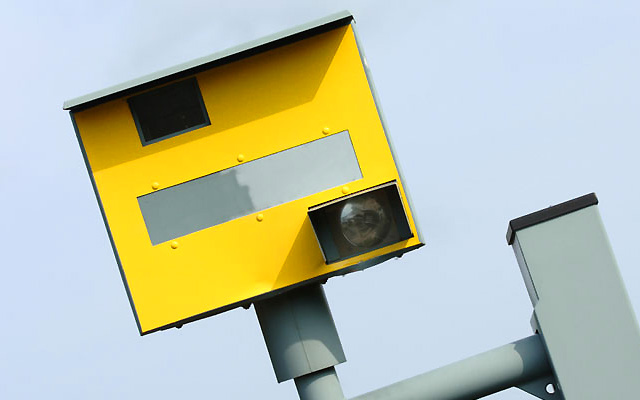
Does a speed camera have to be visible?
The Department for Transport revealed that all speed cameras were to be painted yellow by October 2016. This should make most of them easier to see, but mobile speed cameras can be tough to spot.
Just because you didn’t see a speed camera clearly doesn’t mean the fine is invalid. They aren't there to be spotted and dodged - the point of them is to encourage drivers to stick within the speed limit.
Speed camera myths
Along with many other well-known driving myths, there’s a thought that changing lanes messes up the average speed calculations for SPECS and VECTOR average speed cameras.
This is wrong. While older speed cameras could’ve been ‘tricked’, more advanced cameras now use multiple sets of cameras at each point to track all the lanes and compare average speeds.
But either way, you shouldn't be trying to avoid getting caught. It's safer for everyone to stick to the limits - and the law - by not speeding in the first place.
The future of speed cameras
As technology develops, it's likely that speed cameras will get even smarter in the future. They could be able to pick up even more offences on the road.
Speed cameras on smart motorways now capture drivers who use lanes with a red 'X' over them. In future, they could catch drivers using a hand-held mobile phone while driving too.
Different types of speed cameras
There are over a dozen different types of speed cameras in operation around the UK. Here are the most common ones.
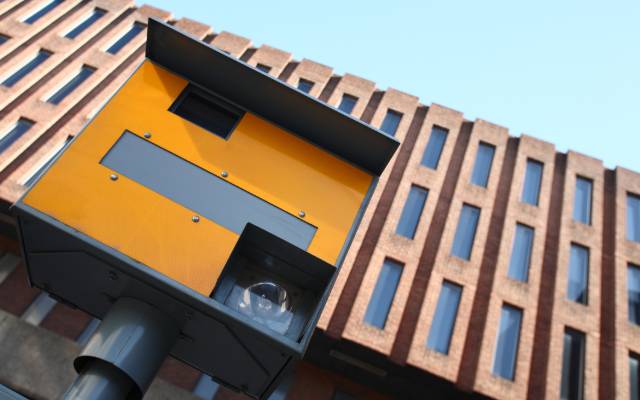
Fixed speed cameras
These record the speed at which your car passes them at a particular spot.
1. Digital Gatso speed cameras
The Gatso was the first speed camera used in the UK when it was installed on the M40 in 1991. The boxes initially used film to capture speeding drivers but now use digital photos.
All Gatso cameras are rear-facing so that the flash won't dazzle drivers. The flash lights up the car and registration plate as well as white lines painted on the road in front of the cameras.
The camera takes 2 photos in quick succession. The camera compares the car's position on the white lines in the 2 photos to work out the speed by the distance covered.
2. Truvelo Combi speed cameras
To tackle the problem of the Gatso being rear-facing only, the Truvelo Combi speed cameras are forward facing. They don’t use flash, instead relying on infra-red technology.
3. Truvelo D-Cam speed cameras
An update to the Truvelo Combi camera, these use similar tech but these are both front and rear facing.
4. HADECS speed cameras
HADECS is short for Highway Agency Digital Enforcement Camera System. They're used mostly on smart motorways, most notably parts of the M25 and M6.
They record a maximum of 5 lanes of traffic and capture vehicles using lane identification, vehicle position and positive vehicle identification.
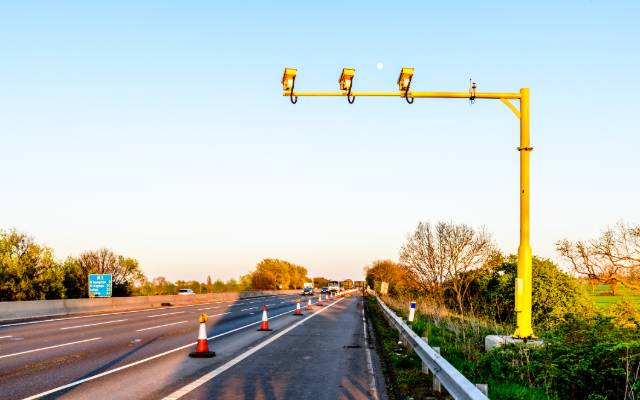
Average speed cameras
Average speed cameras work by recording your speed at two different points. They don't capture your speed in a single flash. Instead, they'll monitor your speed over a length of road.
This is so people don't slow down just before they see a camera and then speed up again afterwards. They help to keep the traffic flowing steadily instead of stopping and starting.
5. SPECS average speed camera
SPECS were the first cameras to enforce an average speed restriction on British roads back in 1999.
They use video and Automatic Number Plate Reading (ANPR) to record drivers between a set of cameras on motorways and dual carriageways. Infra-red photography lets them work day and night to catch speeders.
They're fixed on roads in a sequence at least 200m apart. This then calculates a driver’s average speed over a set distance, and will detect any speeding offences.
The ANPR technology then allows the system to record the vehicle and send a fine to the registered address.
6. Siemens SafeZone average speed camera
Most commonly used in towns, cities and villages, these cameras use the same ANPR technology as a SPECS average speed camera.
You’ll likely find these in areas like outside a school or in a town centre.
7. SpeedSpike average speed cameras
These are one of the newer speed camera systems in use. They fit into a network of up to 1,000 separate cameras linked together by GPRS to monitor an area 24 hours a day. They can catch speeding drivers going in both directions.
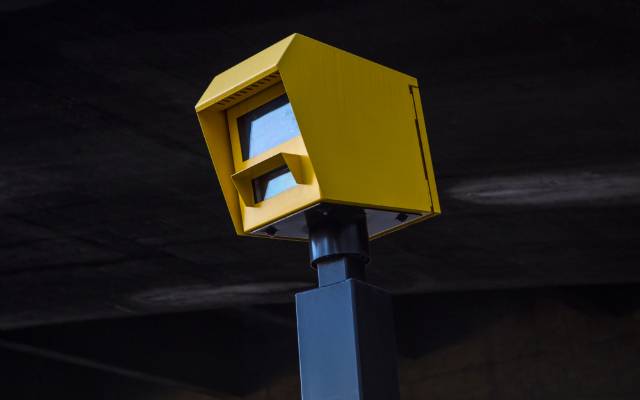
Speed and traffic cameras
These systems use radar to capture and record a speeding motorist. But they also have a dual purpose, monitoring traffic light offences as well.
8. SpeedCurb speed cameras
These are often mounted high up and are thought to be one of the tallest on UK roads.
9. REDFLEX speed cameras
These cameras have a built-in digital camera that can capture multiple offending vehicles in the same junction.
There are currently 2 types of REDFLEX system: the REDFLEXred and the REDFLEXspeed.
The REDFLEXred is used for monitoring traffic light offences, and the REDFLEXspeed monitors up to 6 lanes of traffic on a motorway.
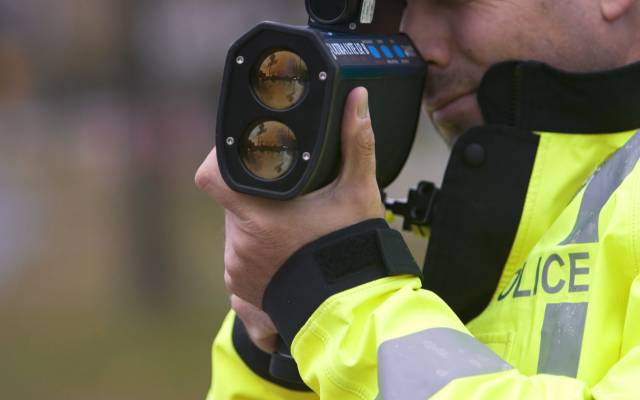
Mobile speed cameras
Sitting within a van parked at locations around the UK, mobile speed cameras can be mini Gatsos, laser guns or hand-held radar equipment.
11. Long Ranger mobile speed cameras
These can capture speeding drivers from 1km away, making it the longest distance speed enforcer on UK roads.
The camera can also be used for recording drivers not wearing seatbelts and people using the phone while driving.
